Illustration and NFTs
Ed Merlin Murray gives his perspective on an area that has been growing in stature and hitting the headlines: Non-Fungible Tokens (NFTs). These are a new way to verify the scarcity of a digital asset, often a jpeg or mp4. They exist on a blockchain, which is like a kind of giant immutable ledger, and are purchased using a crypto currency.
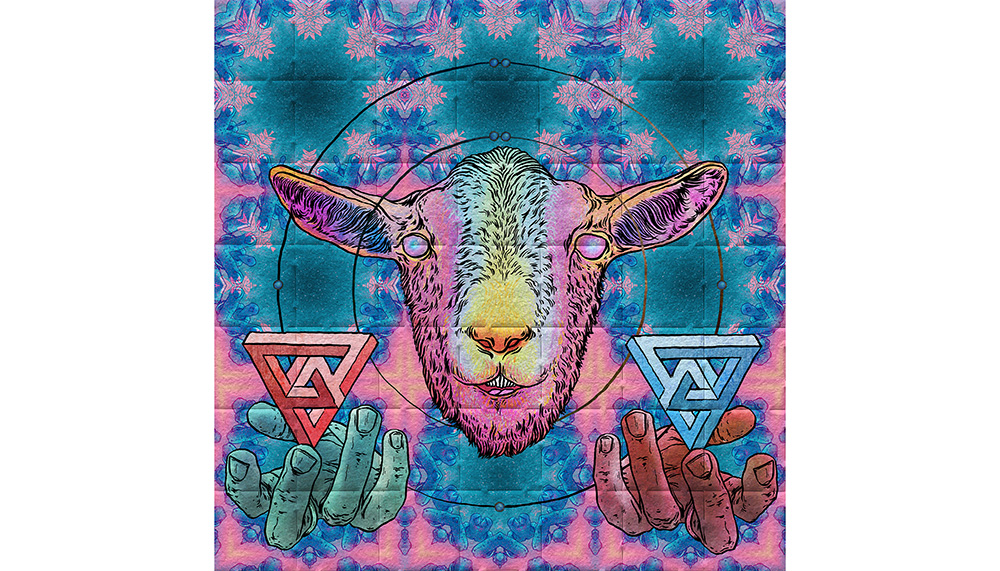
Hello Ed. Please give some background as to how illustration and NFTs have interacted
Traditionally a lot of illustrators have needed several streams of revenue in order to stay afloat. For me this has consisted of commissioned illustration and animation work in a variety of fields (music videos and album artwork, publications, fashion design) alongside things such as an online shop, Patreon subscribers, and art / illustration / comic fairs. Throughout all of this, the majority of my personal work, which for me is where the joy is, was unpaid other than in the currency of likes, shares and comments on social media platforms. The new industry of Non-Fungible Tokens (NFTs) has made it possible for me and other illustrators like me to be paid properly for the personal work we are doing.
I have now closed down my online shop and Patreon (which had both become much less profitable since Brexit due to spiralling worldwide postage costs) and now I can spend all of that time in getting to grips with this new world of NFTs. The world of illustration and NFTs have not yet intersected to a point where commissioned illustration work has been replaced by commissioned NFT work – brands and commissioners are just beginning to take advantage of this new technology and marketplace. I imagine that this will change over the next couple of years as we see more and more adoption of the NFT technology in these areas
You have worked on the Satoshi Faces ‘profile picture’ NFT project – What were your initial thoughts when it was proposed?
I was delighted. I have been hovering on the edge of the NFT space, filled with FOMO, and unable to work out how to launch myself into this new marketplace. The Satoshi Faces team made this incredibly easy for me and gave me a brilliant headstart into the industry and a full introduction to the technology and mechanics of NFTs.
Satoshi Faces is what’s known as a ‘PFP project’. This stands for profile picture, and means that customers are literally buying these to use as their Twitter avatar. It can take a little time to get your head around this, if you’re coming from a traditional illustration background. The NFT space can be roughly divided into two at the moment, speaking very broadly. There are PFP projects, or collectibles, and there is NFT art (sometimes called crypto art) which is roughly analogous to the experience of selling art in the ‘real world’ – these can be 1/1s or editions of any size.
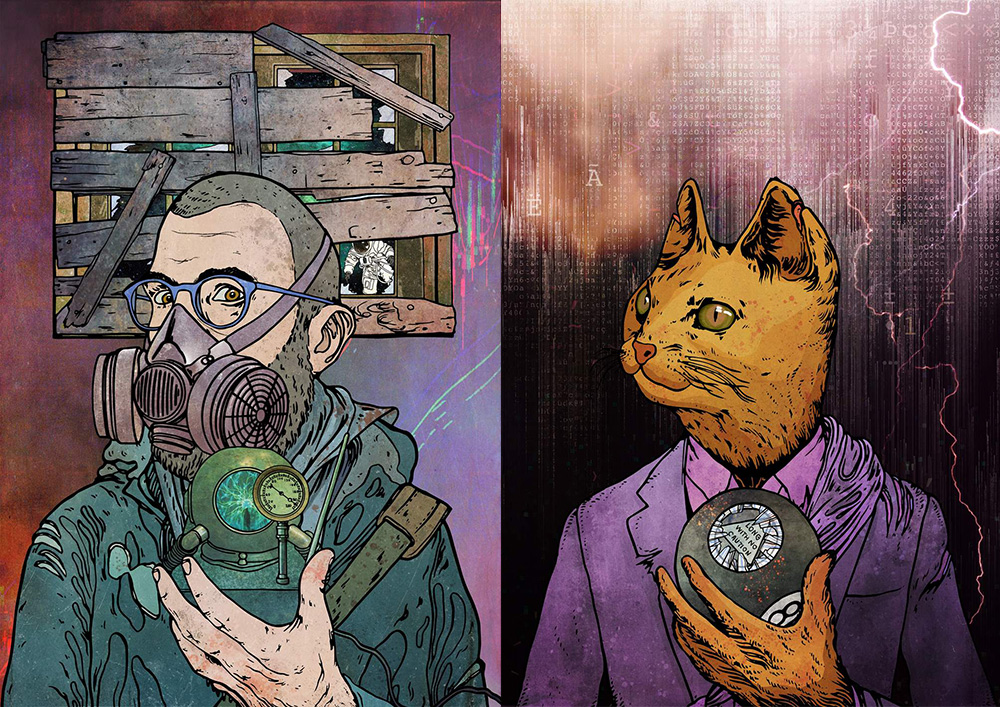
Did it feel like a gamble to take the project on?
The NFT space is much more of a gamble than traditional commissioned illustration work as payment is often given as royalties – I was offered a percentage of primary sales. However, with the help of the AOI, I negotiated a clause in the contract whereby I was able to receive a fairly substantial sum up front. This was in excess of any amount I have ever earned as an illustrator or animator.
Has it proved to be financially worthwhile?
Yes, absolutely. Satoshi Faces project proved to be quite lucrative for the entire team which included me, and the exposure gained from there has allowed me to go on and release editions and 1/1s of my own personal work as well as to launch two collectible NFT projects of my own.
Any advice for illustrators interested in the NFT area?
The first thing to be aware of is that very little of your existing customer base will follow you into the NFT space. I have a sizable following on Instagram and have found that very few of those people have followed me into this new world. It is necessary to basically start afresh.
Instagram, whilst a very useful tool for the modern freelance illustrator, is almost completely useless in the NFT space. All promotions are done on Twitter and in Discord, so for me it was a case of starting completely again. This can be daunting if you have spent years building up a following on social media, but actually is a very useful thing. I retain the traditional illustration following on Instagram but I have now added an entirely new market (into which I probably should have diversified anyway).
Secondly, it will be necessary to have at least a basic working knowledge of Blockchain technology and crypto currency markets. There are a number of different block chains on which NFT smart contracts can exist; these all have a variety of pros and cons and are suited to different types of projects.
One of the very nice things about the NFT space is that there are no real experts or trained professionals. Everyone is new to this. It is a brand-new industry and as a result it is an extremely kind and helpful community. I personally have been helped massively by others more experienced in the space than I, and as a consequence I am happy to help anyone trying to get into the NFT world.
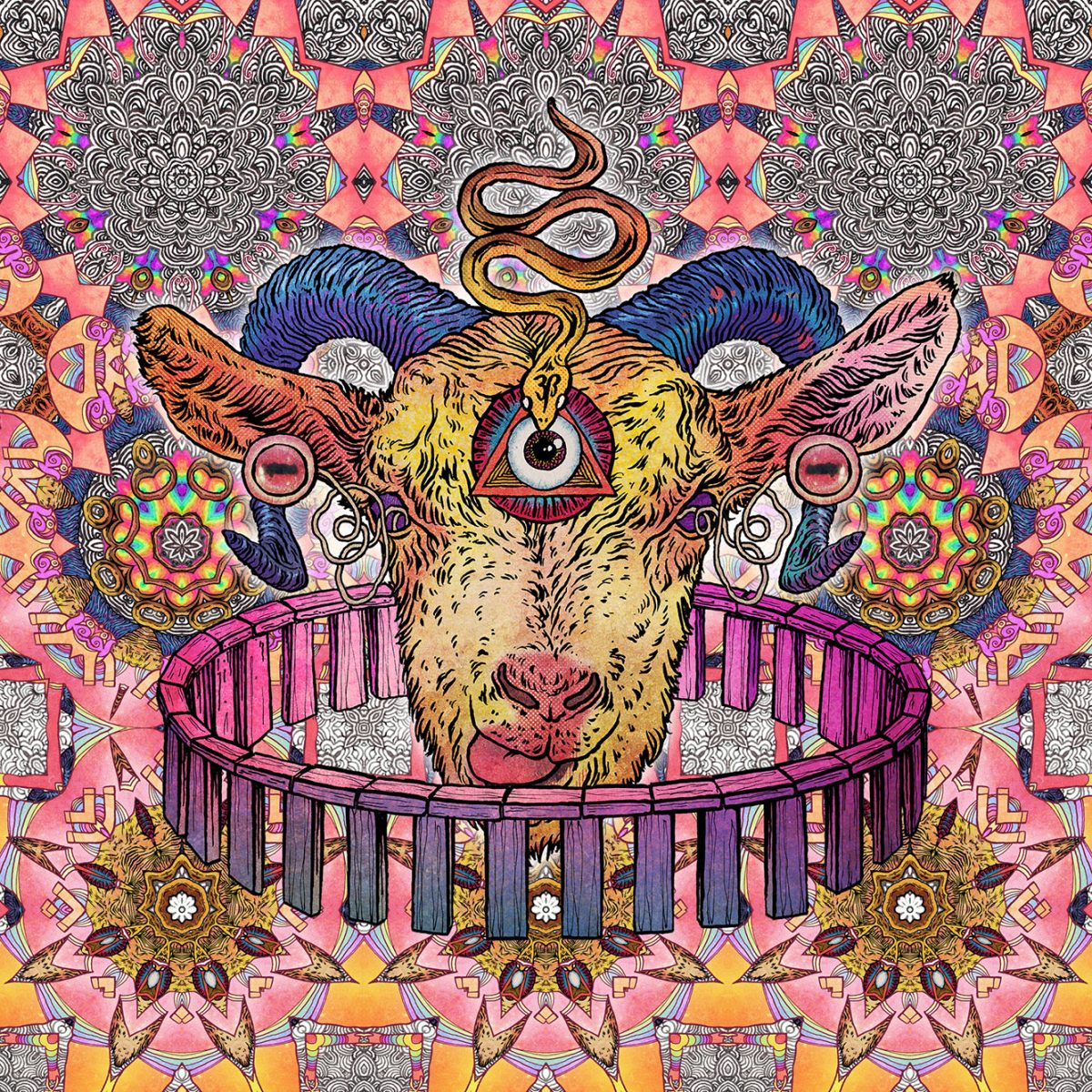
What about the environmental impact of NFTs?
For a lot of people, the most they may know about NFTs is regarding the environmental impact of cryptocurrency and NFT production. Headlines have focused on this aspect since the boom of the industry last summer, and it’s true that certain blockchains are very energy hungry.
One positive thing about this space is that it has already begun sourcing new ways of environmentally friendly production (and done so a lot quicker than most traditional industries which have taken years to begin any kind of climate friendly policies and often under the duress of government policy). Yes, the Ethereum chain uses masses of electricity but there are more environmentally friendly chains to use (Solana being the front runner). A lot of the headlines, however, forget to mention that actually the global banking industry uses twice as much electricity as Bitcoin, so every time we complete a transaction on our phone banking apps we’re all playing an albeit small part in that huge energy consumption. A single transaction on the Solana network reputedly uses as much energy as it would take to complete 2 internet searches.
For anyone in the creative industries, there are parts of our work which contribute negatively to the environment: flying overseas for work, having prints and t shirts made, ordering materials etc etc and we can make conscious sustainable choices when we do so. The same goes for this part of the industry; it is possible to choose a platform which promotes sustainability and is consciously working to counteract any damage to the environment (Kodadot, Viv3 and hic et nunc, to name a few).
Can NFTs be sustainable?
People obviously are right to be concerned about yet another industry popping up which will contribute to energy use and a negative impact on the environment, but the NFT space has risen to the challenge; in such an innovative industry there was bound to be an innovative response. For example, a company in Canada is using municipal waste to generate electricity for on chain transactions, and developers all over the world are rewriting systems so more information can be uploaded to the chains in one go therefore requiring less energy overall. On a micro scale, many NFT projects use profits to offset their carbon use and you will find numerous donations to environmental charities from projects that wish to create an environmentally friendly space.
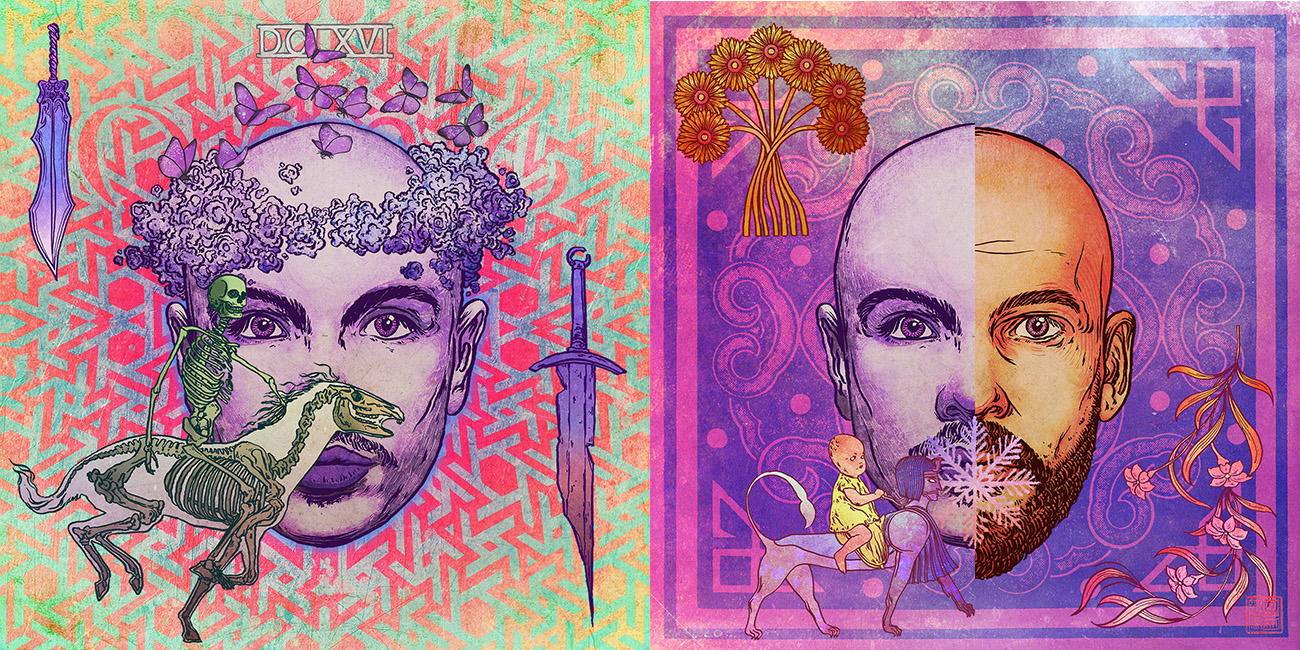
Where are you going with your own NFT projects?
I have been lucky enough to be able to run two separate NFT collectible projects with my wife Sophia as project manager, as well as with two separate teams of developers, coders and social marketers. Our first solo project, Madame Sofia’s Oracle of Wisdom (based on the tarot) was released for free on the Ethereum blockchain and helped us to create a big following of fans of the artwork as well as a truly lovely community of like-minded people.
I’m currently working on a new project with some very skilled developers (and old school friends) to diversify into the Solana blockchain world of NFTs. Space Goats On Acid may sound somewhat flippantly titled, but the intention behind this project is to seriously look at the burgeoning world of research into the potential benefits of certain psychotropic medicines. We will donate a percentage of profits to MAPS (the Multi Disciplinary Association for Psychedelic Research) and other centres of research into psychedelic studies for mental health.
As a bipolar man, I’ve always been interested in finding ways of coping with and managing my mental health. Primarily, I cope through my creative output but there is a growing world of research and discovery into the use of these long-prohibited molecules as treatment for debilitating conditions such as depression and PTSD.
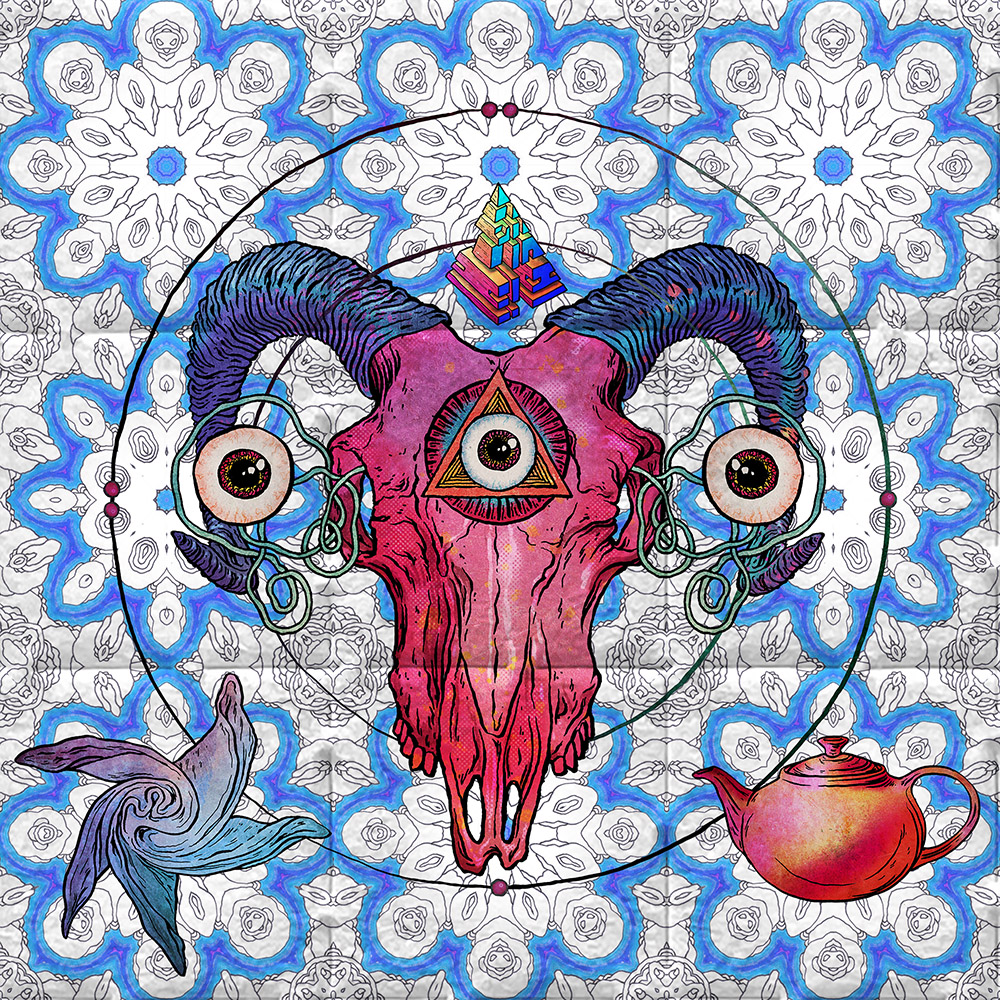
We’re also committed to using this new platform as a launchpad for artists wanting to make a debut in the NFT space. As I’ve already mentioned, there’s a certain amount of fear, uncertainty and doubt when first getting into the NFT world and it can be a daunting task to initiate the move yourself when you are trained in fine art or illustration. To remedy this, we’re hoping that the success of our initial project will create a platform and marketplace from which new artists can launch NFT collections and gain some momentum from the community we have already built.
We envision this as a kind of stepping stone for artists to get work in front of the NFT collector community and make the transition from ‘real world’ to NFT space a little less stressful and daunting. We already have on board some well known names from the worlds of illustration and graphic art, and will be providing all of the blockchain technology and support they need in order to start selling their work in this exciting new space.
We’re in the early stages of our current project but people can find more information at our website or via the project’s Twitter account.
Find out more about all of Ed Merlin Murray’s NFT projects here.
See here for more information on blockchain.
Back to News Page
